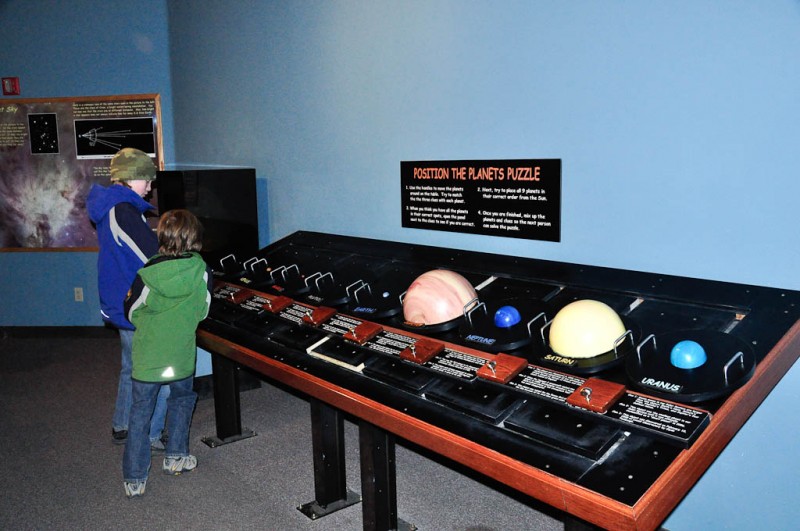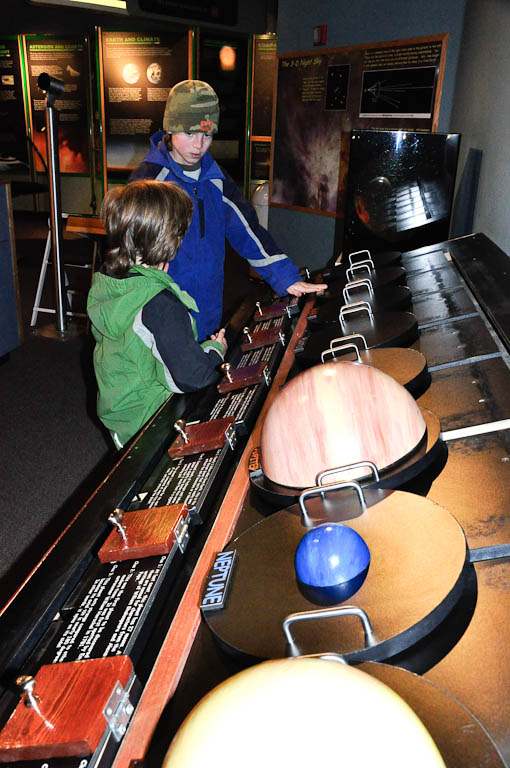The Lowell Observatory in Flagstaff, Arizona was founded in 1894 by Percival Lowell and is one of the oldest in the United States. They offer many educational programs for the public including an evening program which includes a look through their original Clark Telescope. After experiencing the “Star Party” a couple weeks earlier we thought it would be fun to check it out.
The observatory is noted for their observations that led to the theory of the expanding universe, the discovery of Pluto and Lowell’s theories about life on Mars. They are currently working with NASA on the Kepler Project which “is specifically designed to survey a portion of our region of the Milky Way galaxy to discover dozens of Earth-size planets in or near the habitable zone and determine how many of the billions of stars in our galaxy have such planets.” And, their most recent addition is a 4.28 meter diameter mirror which was made in conjunction with the Discovery Channel which will contribute to additional research and educational programming on the Discovery Channel Network.
The night we chose to visit the observatory was the coldest night I have experienced in recent memory. When I think of Arizona, I think of hot, dry and sunny but, mostly the hot part. Obviously, I have never been to Flagstaff in December and was unprepared for the 6 degrees F. (yes, just 6!) that greeted us when we arrived. That one fact would make our trip short and this blog even shorter.
There is a small museum with interactive exhibits which kept the Dudes busy and a 30 minute film on the cosmos (with Mannheim Steamroller soundtrack) which was very interesting. However, I have never been able to wrap my head around anything dealing with the cosmos. So after the film, I sat there dumbfounded thinking, “huh?” But, thinking about the cosmos is always good food for thought.
Another part of the evening program included a “portable planetarium” set up with an astronomer at the controls. The Astronomer took us on a tour through the galaxy and beyond to 13.7 billion light years from earth. Once again, huh? He stopped at 13.7 billion light years because it is the outer edge of the radiation produced from the “big bang”.
The one thing we were most excited about was looking through their telescopes. The Clark telescope was open and pointed at Jupiter and a smaller portable unit was set up outside pointed at the moon. This is the cold part.
The Lil’ Dude and I made our way up to the Clark telescope first, took a peak at Jupiter and three of its moons, said “ yep, there they are” and then went back inside to warm up. Once over that chill, we went back outside to view the moon on the portable telescope and said “yep, there it is” then once again headed back inside. I determined that my three layers of clothing was good for about 90 seconds at 6 degrees F. The Hippygeek and the Big Dude had a similar experience but seem to be a little hardier lasting about 3 minutes out in the elements. Then as we were all turning into popsicles, we decided it was time to go home and thaw out.
Despite the cold, it was fun to visit the historic observatory, listen to the astronomers and peer through the telescope that was used to advance astronomy and the understanding of the universe. And, who knows, the experience may have nudged me ever so slightly past the “huh? stage”.
“It is far better to grasp the universe as it really is than to persist in delusion, however satisfying and reassuring.” Carl Sagan



